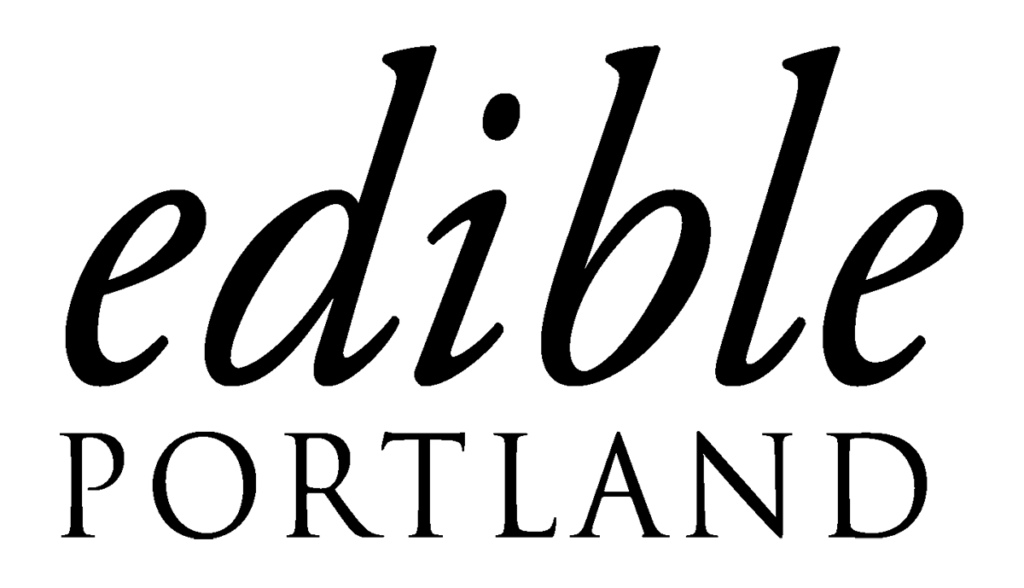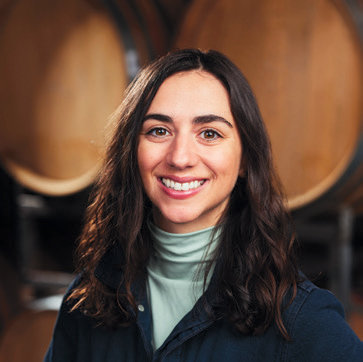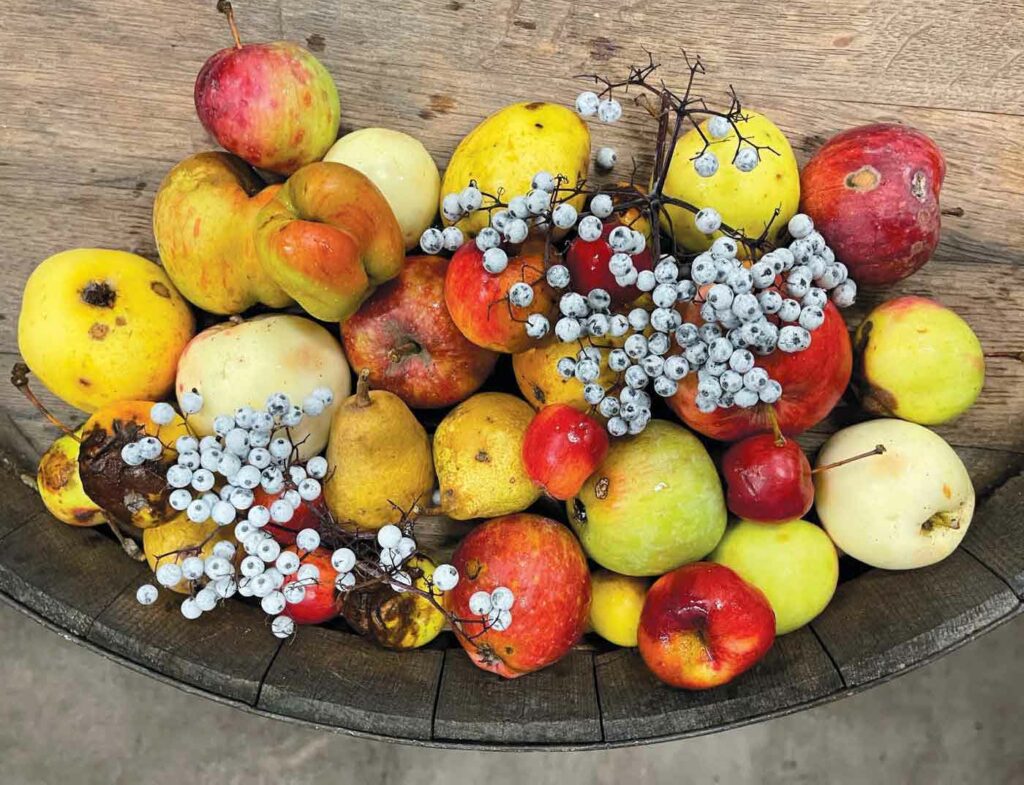
The border between Art and Science as disciplines is not easy to map. Still, for Kim Hamblin and Dan Rinke, co-founders of Art + Science- Cider + Wine Company, fermentation curves are a natural pairing for the business owners’ artistic mediums. Each Art + Science product label is an original piece of Hamblin’s art (of which there are currently more than 35). As we sit down at their tasting room on Roshambo ArtFarm in Sheridan, dozens of Hamblin’s cut paper assemblage pieces adorn the premises. Driving onto Hamblin and Rinke’s hilltop, 40 acres in the shadows of the Oregon Coast Range, there are signs you have crossed into a new paradigm, one that Lewis Carroll would have enjoyed. At the base of the hill is an empty festival village centered around its oversized brick kiln, a small stage ensconced in flowers, a noncontiguous garden where green fibers are permitted to become wood and a cottage with a window for wine service. Welcome to the whimsical world of Art + Science Cider + Wine.
Farming & Fermenting
After eyeing it for several years, Hamblin purchased the property in 2006 before meeting Rinke. “I was a real estate stalker,” she says. There was no plan to become a beverage artisan or amateur music festival director at the time of purchase. Nor was there a plan to fall in love with the vineyard manager and winemaker at Johan Vineyards. Rinke and Hamblin met at a crowded industry event where a local distiller gave up his seat next to Rinke to Hamblin. As Hamblin describes, they bonded over a drink and science, specifically the role of potassium in winemaking. “Potassium is a sexy word,” Hamblin remembers. The substance of their days was quite different then, with Hamblin working as an artist and realtor and Rinke farming and making wine. Still, in their operation today, the marriage of such skills fits.
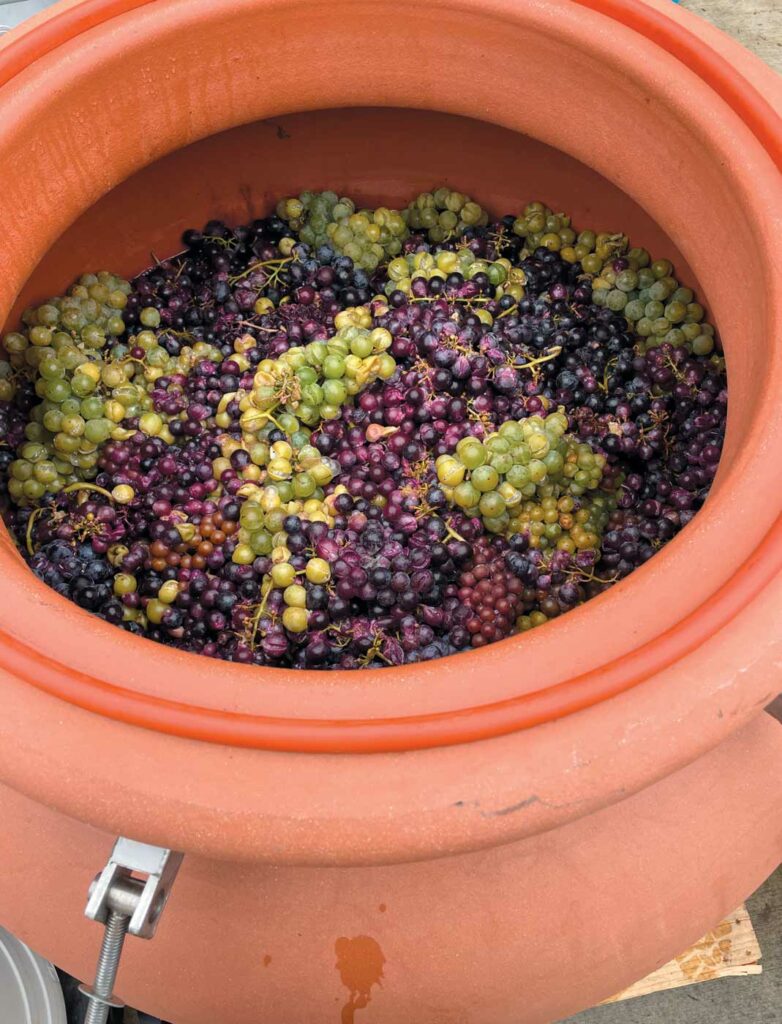
Rinke, a Wisconsin native, spent several years working in wine distribution and sales before pursuing a degree in viticulture from Fresno State University. “Why viticulture over enology for your degree?” I ask Rinke, waiting for a philosophical response about farming and grape quality. Instead, like many important things in life, the decision involved a conversation over a cigarette. “I went to a wine dinner with Michel Chapoutier for work…as soon as dinner was over, I went over to the bar to have a smoke. Michel was French so, so did he.” When Rinke explained that he enrolled in an enology degree program, Michel scoffed, “Wine makes itself. You should go and learn how to grow grapes.” Monday morning, Rinke heeded the words of the famed Rhone producer and changed his major. “The French influence!” Hamblin chimes in.
I asked Hamblin if she grew up with any cultural connection to wine or fermentation. “Besides stealing my mother’s alcohol? No…I didn’t even really like cider.” Cider had not impressed Hamblin until the taste of a Cidrerie du Vulcain helped turn her interest to apples (thank you, Mr. Perritaz!). “I knew with this 40 acres, I had to farm something,” Hamblin recalls. With the high cost of grape planting and the site being cooler than other parts of the Willamette Valley, fruit trees made more sense. Rinke’s work at Johan Vineyards yielded occasional access to excess vine cuttings, so the couple also interplanted Gruner Veltliner, Savagnin, and an assortment of unknown red grapes among the fruit. Today, Rochambo ArtFarm consists of 15 acres planted to a clonal menagerie of pears, quince, plums, apples and grapes.
Rinke refers to the interplanting as “mixed species farming” designed to promote microbial and biotic diversity, a philosophy which birthed Symbiosis, their barrel-aged cider-wine coferment made from Gruner Veltliner and foraged apples. Each harvest is supplemented with both purchased and foraged fruits. “In the early years, I was not as skilled of an apple huntress as I am today,” Hamblin explains. These days, the couple spends a lot of time in nature searching for the right flavors and fruits to build out their ciders, perries and co-ferments.
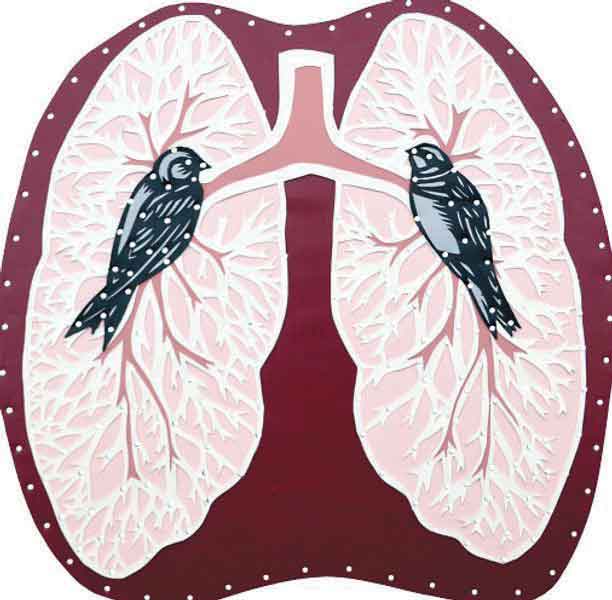
Illustration: Kim Hamblin
There is an energy and life to the Art + Science product that one can find reflected in the property’s crevices. Hamblin refers to her growing style as “ecological gardening,” a method that acknowledges that the human relationship to nature is often unsavory. There are myriad bee species observing the interview, so I ask how the aviary population is managed—a popular topic among Willamette Valley wineries seeking a greener reputation. “Just leave them something…People complain about not having any bumble bees, and I’m like, well, did you mow everything down around them?” Hamblin and Rinke go on to explain how commercial Mason Bees are sold in small cardboard cylinders, but the two of them prefer to leave their critters the real thing, an abundance of tall, hollowed plant stems for burrowing, a practice which has obviated their need to bring in commercial pollinators.
“Leave them alone, and they know what to do.” The result is a piece of property upon which Rinke, Hamblin, and their visitors act as co-op members of the surrounding life.
Festival Season
The first time I tasted Art + Science two years ago and witnessed their piece of the sky at dusk, I began to search for an excuse to return to that hill. Visitors to Roshambo ArtFarm can come for the fermented drink and stay for the concert series.]
Chatter in the Valley quickly surfaced about the legend of the multi-day ‘Wildwood Music Festival,’ which Hamblin and Rinke started from scratch on Roshambo ArtFarm in 2010, with an inaugural headliner: Charlie Parr. The homemade campout festival was volunteer-based and grew each year until the pandemic led to its halt in 2020. The event numbered about 1500 attendees in its final year. Many of my Willamette Valley viticultural peers volunteered on at least one occasion. They described the experience with reverie, the Valley’s own little Woodstock. Like the Art + Science brand, this contribution of disseminating music, art and fermented beverages on their land was not in the plan. Still, it became a core of their identity in the community.
During the summer of 2022, Rinke and Hamblin decided it was high time to bring a version of Wildwood Music Festival back to life via a limited concert series, continuing to offer the option to camp on the property for a small fee. Returning each summer, the event is open to all ages, with Rinke and Hamblin at the helm, serving Art + Science beverages from the cottage window during the show. Bands travel from around the country to play this coveted slice of the Oregon hills, often camping out on the property and mingling with attendees under the constellations after the show. In the morning, Hamblin brews coffee for everyone on the house, and it feels as though morning light is never dreaded here.
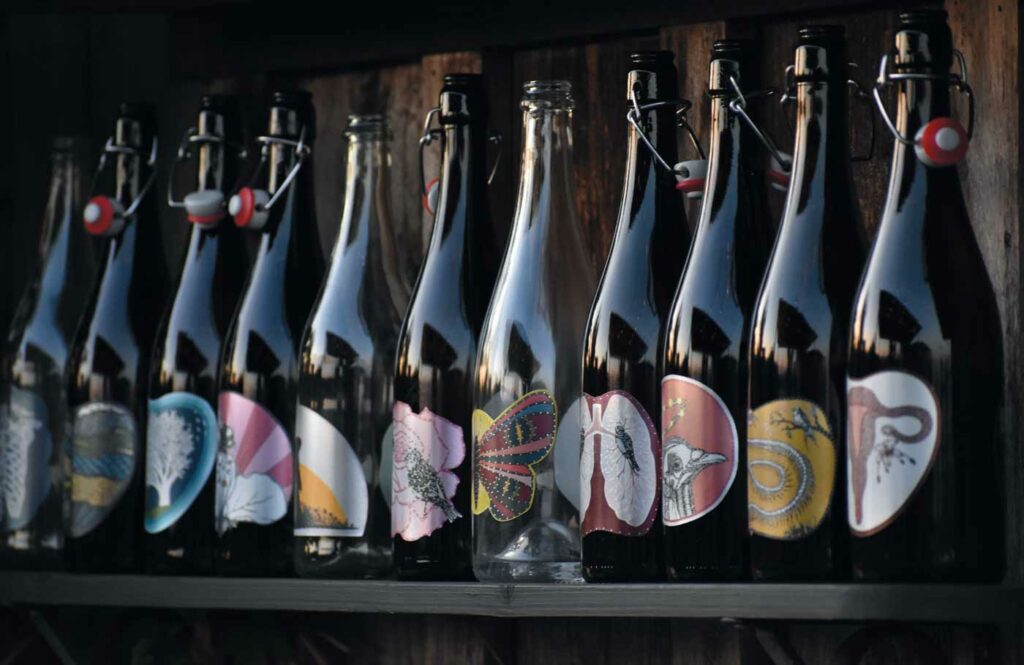
The couple share a passion for music and have many friends in the industry, but when I asked why they returned to putting in the work to invite the concert community back after pre-Covid distribution channels reopened, Hamblin did not wax on about her own love of music. “I think it goes to a bigger theme of just sharing the property. A lot of people don’t have access to land, and we are fortunate…Being able to see the joy on people’s faces and share in that is a huge part of it.”
Why Plumage, not Pinot?
Towards the end of our time together, Rinke and Hamblin quibble jokingly over a carbonic plum wine they will ferment in clay amphora this vintage, named Plumage. Although plums grow easily in this region, they are particularly difficult to ferment and process due to pectin levels and shelf stability. Here in the Willamette Valley, the cash crop for wineries is Pinot Noir, and there are many worldclass producers dotting the hills, so I have to ask, “Why Plumage and not Pinot? Why push the boundaries of consumer taste instead of operating a proven formula?” Rinke smirks, “I don’t want to be in a cover band. I want to write original songs.”
From our time together, I learned that the important question is not whether the couple’s operation outside the Pinot industrial complex and the community building that has since ensued (for bees and Oregonians) was premeditated or organic growth but rather how the duo can continue to foster and sustain their world of edible art and science, in all its creative form.
All Art + Science SKUs and information about their newly launched subscription-based club are available on their website, www.artandsciencenw.com. Customers can also purchase wine on-site at Rochambo ArtFarm. More about Hamblin’s art pieces and cut paper process can be found on the above website and through Imogen Gallery in Astoria, Oregon.
Tasting Room Hours: 3 PM-Dark
Roshambo ArtFarm, 22900 Pittman Road, Sheridan, Oregon
artandsciencenw.com
Photos courtesy of Art+Science, Cider + Wine
